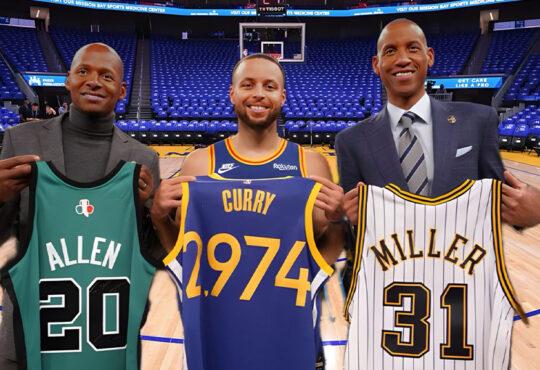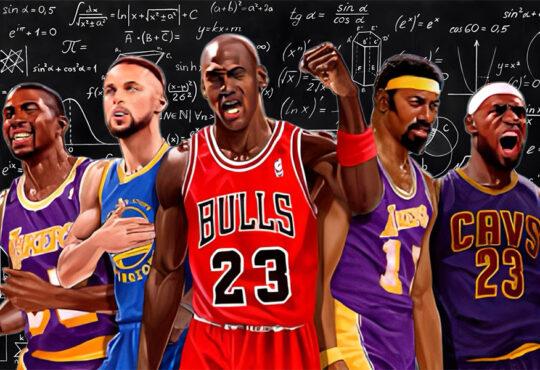
Uncovering the Team Behind NBA 2K Player Ratings: A Comprehensive Guide
Uncovering the Team Behind NBA 2K Player Ratings: A Comprehensive Guide. Every year, basketball fans eagerly await the release of the NBA 2K video game. One of the most popular aspects of this game is that it allows you to play as your favorite players, with ratings based on their actual performances in the NBA. But who decides these ratings? How are they composed? Let’s take a look at who determines these player ratings and how they are calculated.
The People Who Decide Player Ratings
The team responsible for deciding player ratings in the NBA 2K series consists of a diverse group of individuals, including scouts, producers, developers, and rating experts. These individuals work together to gather data, evaluate player performances, and assign accurate ratings that reflect the real-life abilities of NBA players.
1. Scouts
Scouts play a crucial role in the player rating process, as they watch every NBA game throughout the season to assess player performances. They monitor improvements or declines in players’ abilities, as well as changes in teams or playing styles that could impact player performance. Their insights and observations are vital for ensuring the accuracy of player ratings.
2. Producers and Developers
Producers and developers from 2K Sports and Visual Concepts work together to create the NBA 2K series. They collaborate with scouts to gather data and input it into the proprietary system that calculates player ratings. Developers are responsible for creating the algorithms and systems that evaluate player attributes and assign numerical values to them.
3. Rating Experts
One of the key figures responsible for shaping NBA 2K player ratings is Michael Stauffer, the Rating Expert for the series. He has a significant influence on the calculations and adjustments that determine player ratings. Stauffer works closely with the team of scouts, producers, and developers to ensure that the ratings accurately reflect the real-life abilities of NBA players.
4. Collaboration with the NBA
In addition to the internal team at 2K Sports and Visual Concepts, the NBA also plays a role in the player rating process. The league provides data and insights on player performances, and may occasionally collaborate with the game developers to ensure the accuracy and authenticity of player ratings.
5. Community Feedback
The NBA 2K community also plays a role in the player rating process. Fans and gamers often provide feedback on player ratings, pointing out discrepancies or inaccuracies. This feedback is taken into consideration by the rating team, and adjustments may be made to improve the accuracy of player ratings in future updates.
In conclusion, the people who decide player ratings for the NBA 2K series are a collaborative team of scouts, producers, developers, rating experts, and the NBA itself. They work together to gather data, evaluate player performances, and assign accurate ratings that reflect the real-life abilities of NBA players. The process is constantly evolving, with feedback from the gaming community playing a crucial role in ensuring the accuracy and authenticity of player ratings in the game.
How Player Ratings Are Calculated
Player ratings in video games like the NBA 2K series are an essential aspect of the gaming experience, as they determine the abilities and overall performance of each player in the game. These ratings are calculated using a proprietary system developed by game developers such as Visual Concepts, which takes into account various factors and attributes of real-life players. Here’s a detailed look at how player ratings are calculated:
1. Data Collection
The first step in calculating player ratings is gathering data on individual player performances from various sources, including game statistics, advanced analytics, and scouting reports. This information is used to evaluate players’ abilities in various aspects of the game, such as shooting, passing, rebounding, and defense.
2. Attribute Assignment
Once the data has been collected, it is entered into the proprietary system that uses algorithms to evaluate each player’s skill set. The system assigns numerical values to various attributes, such as:
- Speed: A player’s ability to move quickly on the court.
- Agility: A player’s ability to change direction and maintain balance.
- Shooting Ability: A player’s accuracy and range in shooting, including field goal percentage, three-point shooting, and free throw shooting.
- Ball Handling Skills: A player’s ability to control the ball, including dribbling, passing, and avoiding turnovers.
- Defensive Prowess: A player’s ability to defend against opponents, including blocking shots, stealing the ball, and contesting shots.
- Rebounding: A player’s ability to secure rebounds, both offensively and defensively.
- Intangibles: Factors such as leadership qualities, clutch plays, and overall basketball IQ that impact a player’s overall performance
3. Weighting Factors
The proprietary system also takes into account the importance of each attribute in determining a player’s overall rating. For example, a player’s shooting ability might be weighted more heavily for a guard, while rebounding and shot-blocking might be more important for a center. This ensures that each player’s rating accurately reflects their role and impact on the court.
4. Calculating Overall Ratings
Once the numerical values have been assigned to each attribute and the appropriate weightings have been applied, the system calculates a player’s overall rating. This rating is typically a single number on a scale (e.g., 1-100) that represents the player’s overall skill level and performance in the game.
5. Adjustments and Updates
Player ratings are not static and are subject to change throughout the season based on real-life performances. Game developers continuously monitor player performances and update ratings accordingly to ensure that the in-game ratings accurately reflect the current abilities of real-life players.
In conclusion, player ratings in video games are calculated using a proprietary system that takes into account various factors and attributes of real-life players. By assigning numerical values to different skill sets and weighing them based on their importance, the system generates an overall rating that accurately represents a player’s abilities in the game. This process ensures that gamers have a realistic and immersive experience when playing with their favorite players and teams.
The Final Product
After the data has been collected and processed by Visual Concepts’ algorithm-driven system, the player ratings are reviewed by 2K Sports’ production staff before being released to the public in their final form—the rating we see in-game. This thorough process ensures accuracy, fairness, and balance in the game, allowing gamers to make informed decisions about their team selections and enjoy a competitive playing experience.
1. Review by Production Staff
The production staff at 2K Sports is responsible for reviewing the player ratings generated by Visual Concepts’ proprietary system. They carefully examine each rating to ensure that it accurately reflects the real-life abilities and performances of NBA players. This review process helps identify any potential discrepancies or inaccuracies that may have arisen during the data collection or algorithmic calculation stages.
2. Adjustments and Fine-tuning
If necessary, the production staff may make adjustments to the player ratings based on their review. This fine-tuning process helps ensure that the final ratings are as accurate and representative as possible, taking into account factors such as recent player performances, injuries, or changes in team dynamics that may not have been fully captured by the algorithm-driven system.
3. Release of Final Ratings
Once the production staff is satisfied with the accuracy and fairness of the player ratings, they are released to the public in the form of in-game ratings. These ratings serve as the basis for team selection and player performance in various game modes, including career mode and online play against other gamers around the world.
4. Ensuring Parity and Competitive Balance
The thorough process of finalizing player ratings helps ensure parity between teams in the NBA 2K series, allowing for fair and balanced competitive play. By accurately representing the abilities of each player, the game provides an immersive and enjoyable experience for gamers, who can confidently build their teams and compete against others with a clear understanding of their players’ strengths and weaknesses.
In conclusion, the process of finalizing player ratings for the NBA 2K series involves an extensive team working behind the scenes, including scouts, developers, and production staff. Their dedication and attention to detail ensure that accurate data is represented within the game, allowing gamers to make informed decisions about their team selections and enjoy a fair and competitive playing experience. While the exact details of the proprietary system may remain a mystery, the efforts of this dedicated team provide gamers with an authentic and enjoyable basketball gaming experience.







